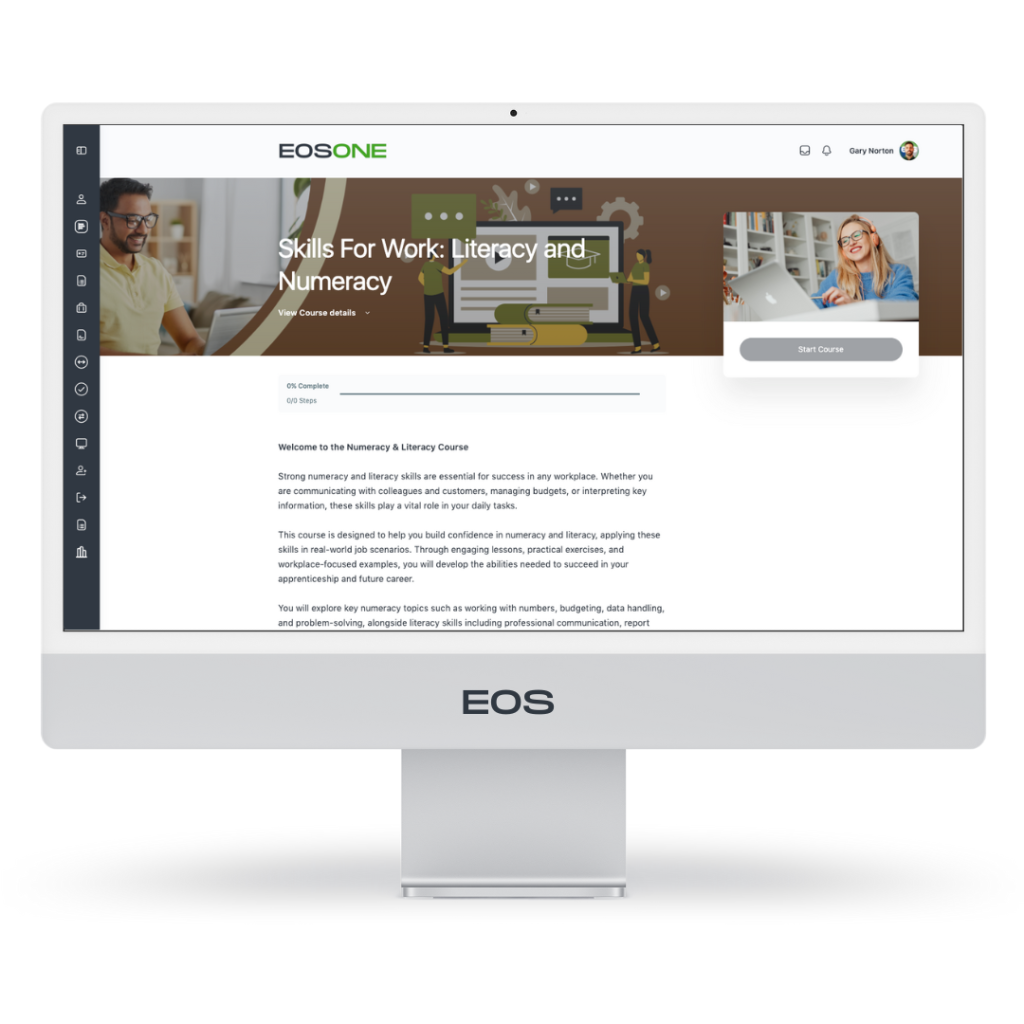The removal of Functional Skills from apprenticeship completion criteria means training providers must now decide how to ensure apprentices still develop essential numeracy and literacy skills. While these skills remain crucial for workplace success, many providers may not yet have considered how to integrate them effectively within their apprenticeship programmes.
Without a structured approach, apprentices may not develop core numeracy and literacy skills needed for their job roles. Tutors may lack clear guidance on how and when to embed numeracy and literacy into progress reviews and workplace training. There may be no consistent approach to helping learners apply these skills in real-world job scenarios.
By following a structured, contextualised approach, training providers can ensure that apprentices receive effective numeracy and literacy training tailored to their industry while making it easier for tutors to deliver and track progress.
The Problem Many Providers Face
Many training providers do not have structured numeracy and literacy programmes in place. As a result, tutors find it challenging to deliver this effectively and to engage apprentices in meaningful discussions about numeracy and literacy during progress reviews.
Providers and tutors are already under significant pressure to deliver high-quality training while managing enrichment, careers advice and guidance, and other apprenticeship requirements. Adding numeracy and literacy to their workload without a structured programme makes it difficult to ensure apprentices develop these essential skills.
Without a programme like this in place:
- Apprentices may miss out on core numeracy and literacy skills needed for their job roles.
- Tutors lack the resources and time to integrate these skills effectively.
- Providers risk receiving constructive feedback from Ofsted for not embedding numeracy and literacy adequately.
- Employers may see gaps in workforce skills, affecting productivity and success.
A structured, ready-to-use numeracy and literacy programme ensures that apprentices gain these vital skills without adding unnecessary strain to tutors and providers.
How This Could Be Delivered
To ensure apprentices gain practical, job-relevant numeracy and literacy skills, training providers should follow these key steps.
Embed numeracy and literacy throughout the apprenticeship
- Introduce learning from the start of the apprenticeship.
- Provide quarterly progress reviews focusing on applied numeracy and literacy.
- Use e-learning modules and tutor-led activities to reinforce learning.
Use industry-specific examples while keeping the core framework
- A core numeracy and literacy programme applies across all sectors.
- Each sector should provide specific examples and challenges linked to workplace tasks.
Provide on-demand learning and support
- Online modules covering core numeracy and literacy principles.
- Access to career advisors, mentoring platforms, and workplace training resources.
Or Just buy EOSONE!
If you want to take the burden off your team while ensuring your apprentices get the Numeracy and Literacy training they need, EOSONE provides a complete solution.
With every element of Numeracy and Literacy delivered in a beautifully designed e-learning course called Planning Your Future, you can seamlessly integrate Numeracy and Literacy into your curriculum without additional workload for tutors.
Give your learners the structured support they need to build successful careers—without the hassle of creating everything from scratch. A strong Numeracy and Literacy programme ensures that every apprentice leaves with the skills they need.

Numeracy and Literacy Curriculum Framework
A structured, step-by-step numeracy and literacy programme should be embedded throughout the apprenticeship to ensure apprentices develop essential skills within the context of their job role.
Numeracy Modules:
- Understanding and working with numbers – Whole numbers, decimals, fractions, and percentages.
- Fractions, decimals and percentages – Converting between different number forms.
- Basic arithmetic and estimation – Mental arithmetic, quick calculations, and accuracy.
- Measurements and units – Understanding and converting between units of measurement.
- Time and scheduling – Reading time formats, estimating task completion, and shift planning.
- Data handling and interpretation – Understanding graphs, charts, and numerical trends.
- Problem-solving and logical thinking – Applying numerical skills to decision-making.
- Financial awareness and budgeting – Handling costs, budgets, and financial literacy.
- Ratios and proportions – Scaling, proportions, and workplace calculations.
Literacy Modules:
- Everyday reading and writing – Workplace documents, emails, and reports.
- Spelling, grammar and sentence structure – Writing professionally and clearly.
- Effective communication and professional writing – Structuring reports and emails.
- Listening and verbal communication – Active listening and effective workplace discussions.
- Report writing and note-taking – Summarising key information professionally.
- Customer and client communication – Handling customer interactions in writing.
- Reading and understanding workplace documents – Policies, handbooks, and contracts.
- Persuasive and critical writing – Writing proposals, arguments, and structured content.
- Digital literacy and online communication – Writing for digital platforms and workplace systems.
This core curriculum ensures that every apprentice builds the numeracy and literacy skills needed to succeed while still allowing for customisation based on their sector and job role.
The programme should include:
- Engaging online learning modules covering core numeracy and literacy principles.
- Tutor guidance for embedding skills into progress reviews.
- Contextualised real-world applications relevant to each industry sector.
- Assessments and interactive activities that reinforce learning.
- Key Topics Covered in a High-Quality Numeracy and Literacy Programme
The Benefits Of Implementing This Strategy
A well-structured numeracy and literacy programme ensures that every learner gains the essential skills they need to succeed in their job role. This aligns with Ofsted’s expectations, which state that apprenticeships must embed numeracy and literacy effectively to support learners’ career progression and workplace competence. A strong programme helps training providers meet these requirements and demonstrate high-quality provision during inspections.
Employers also benefit from apprentices developing stronger numeracy and literacy skills. Employees who can confidently handle workplace calculations, read and interpret policies, and communicate effectively are more efficient, accurate, and capable in their roles. This contributes to improved productivity, fewer errors, and better customer interactions.
By ensuring that apprentices receive high-quality numeracy and literacy training, training providers can enhance learner success, meet Ofsted requirements, and provide employers with a more skilled and capable workforce.
